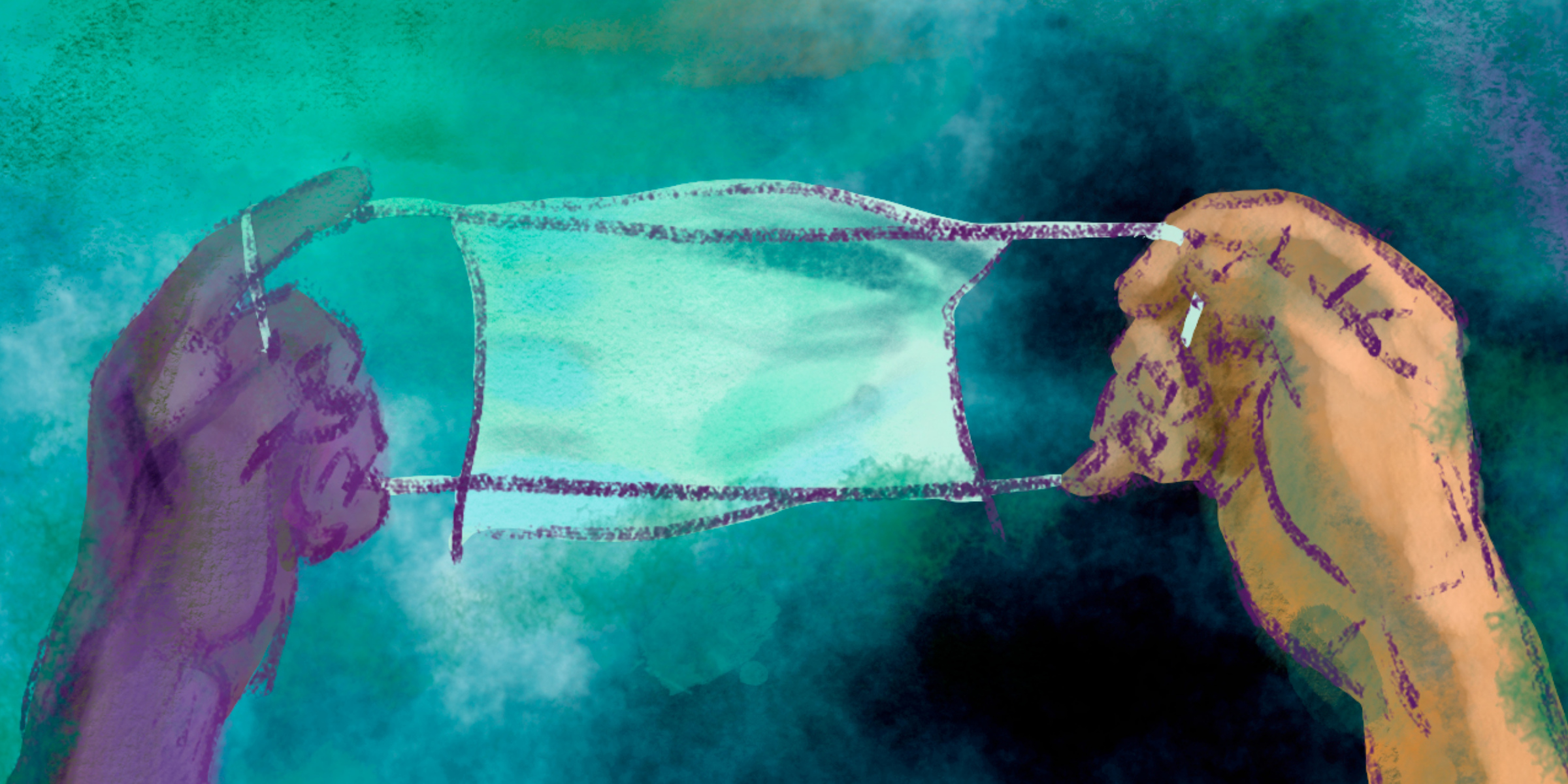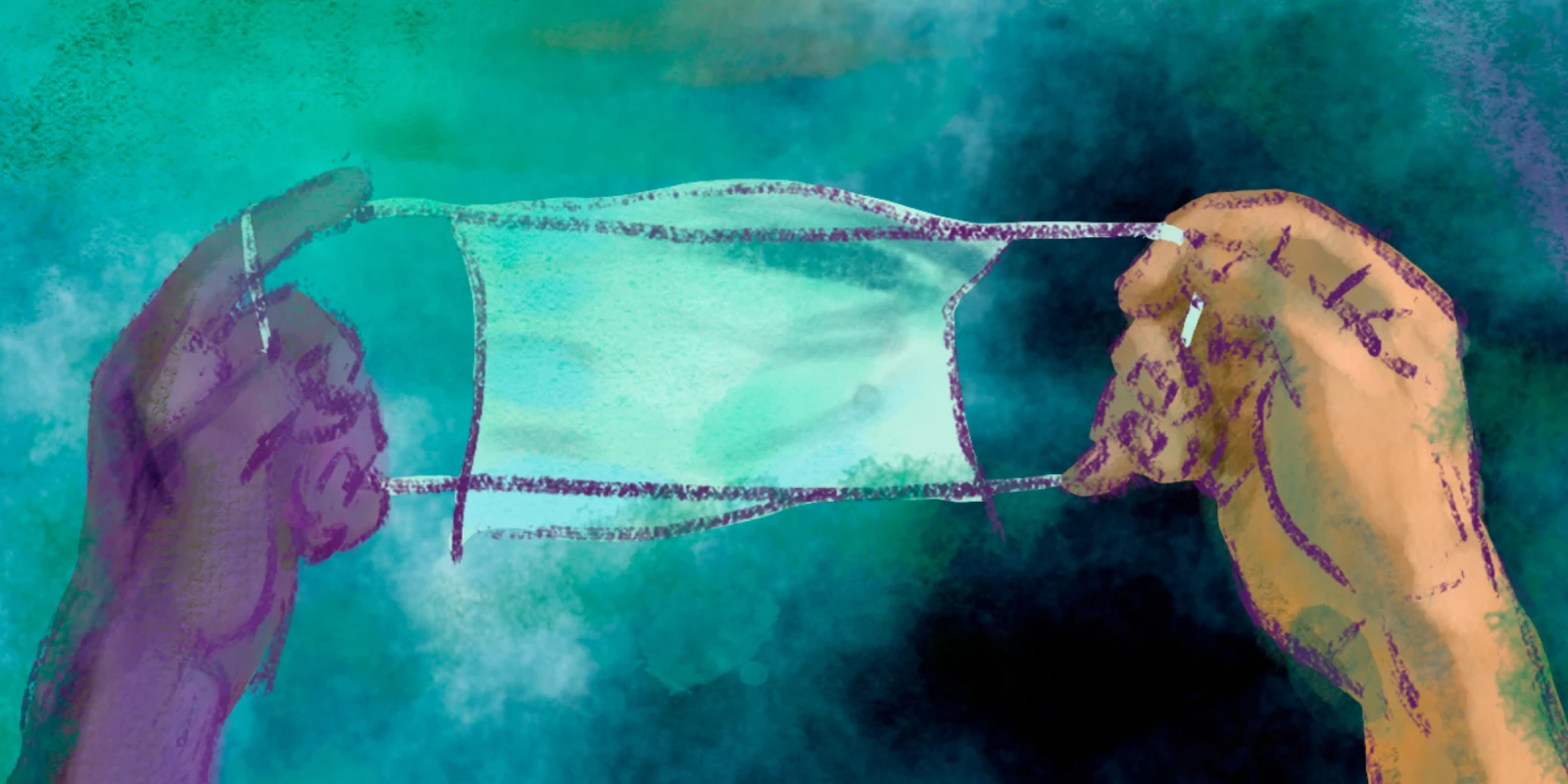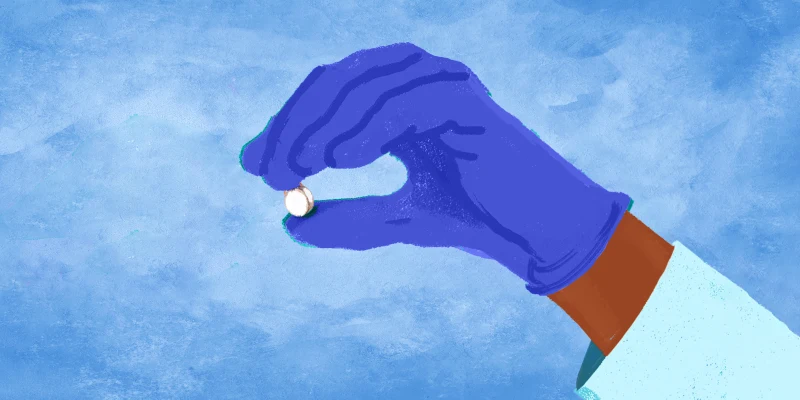
The tumor now encased her major blood vessels, snaking its way around them and tightening its grip. Mrs. T’s lungs, once pristine on her prior CT scans, were now littered with cancerous nodules. Her liver was studded with new metastases and her abdomen swelled with fluid. In a short time, the cancer afflicting this fiercely active woman had progressed rapidly. I felt a familiar sadness well up within me as I left the comforting darkness of the radiology reading room after reviewing her scans. Who would she soon be leaving behind? How would I choose my words so as to leave her with some hope? And who would hold Mrs. T’s hand and gently wipe away the tears that she might shed as I spoke to her?
In this new world shaped by COVID-19, mandatory public health regulations have restricted visitors from our hospital for several months, with rare exceptions. This has been a common approach taken by health care systems around the country, a necessary measure to ensure the safety of our patients, those working in hospitals, and the broader community we serve. We are all struggling to adapt to a new work environment in which procedures and protocols change daily, rapidly evolving as the pandemic unfolds. As a hospitalist and the frequent bearer of bad news, delivering it never gets easier. But having to tell my patient that she didn’t have much time left without her family by her side felt cruel.
Mrs. T’s family had contacted the hospital’s leadership, requesting they be allowed to visit. As her attending physician, I was informed as a courtesy. The request, while it broke my heart, was politely denied. She wasn’t imminently dying, so I could not in good conscience ask for an exception. I could tell from the one brief phone call I had earlier with Mr. T, that he would be beside himself at hearing his wife’s prognosis. She was his whole world.
As I waited for the elevator to take me to Mrs. T’s room, I tried to put myself in her shoes: scared and alone, clinging to a shred of hope that additional chemotherapy or a trial might offer some time. Then I imagined myself as her grieving spouse — soon to be left behind, retirement and old age a long, lonely road stretched out ahead. I pulled up a chair to the side of her bed. More than anything, I wanted to pull the mask down from my face before sharing this news, my expression visible to her. But universal masking remains a mainstay of keeping those in the health care environment safe from COVID-19. And so the surgical mask stayed in its place, straps carefully tucked behind my ears. I reminded myself that this was for her benefit. Still, delivering this news from behind a mask didn’t feel quite right.
I could see how much energy she had been devoting to being strong. Her shoulders seemed to relax in relief. Without my saying it directly, she seemed to understand. “I don’t have a lot of time, do I?” I told her that as doctors, we are not great at making those kinds of predictions, but that the scans did show her cancer had worsened. I watched as she absorbed this information. She reached out to me. I took her hand in mine. We sat in silence for a minute or two. Then I asked her what was most important to her. “I want to be at home with my husband; that’s what I want. And I still have hope.”
Mrs. T asked if I could join her as she called her husband on FaceTime, so that we could share the news with him together. So we did, me still wearing my mask, helping her to shoulder the burden of telling him. Later, I called them both briefly from a protected space using Zoom so that they could see my face on video, the human doctor also feeling sad behind her mask. Mr. T’s distress at not being able to be at his wife’s side was palpable. I felt overcome with guilt.
We discharged Mrs. T as soon as she was stable enough to complete her antibiotic course at home. I talked with her oncologist and arranged for visiting nurses to help with her care so that she would be monitored closely. I knew she didn’t have much time but I wasn’t sure just how long. Over the next few days, I logged into her medical record occasionally; then for a while I didn’t check.
Mrs. T died two weeks after I discharged her — at home as she had wanted, but much sooner than I had expected. I saw messages in her chart from her husband back and forth to the oncology clinic. In his typed words, I could hear the grief and desperation, his hope for more time. Because of the need for visitor restrictions, COVID-19 stole precious moments of my patient’s last few weeks from both her and her husband, while we kept her admitted to the hospital. During that time, we treated her infection, trying to stabilize her so that she might be a candidate for more chemotherapy. But her body, growing frail, ultimately succumbed to the cancer taking hold of her. They lost that valuable time together, my patient and her husband.
I imagine that Mr. T is alone now — and must mourn largely alone — because of the restrictions COVID-19 has imposed upon us all. Perhaps he will remember my face as a yellow surgical mask, dark hair, dark skin, and dark brown eyes peering out from above, the doctor who from behind her mask with a heaviness in her heart apologized to him for not being able to visit his ailing wife. I hope that he also remembers the brief moment I tried to humanize myself, removing my mask when I called them both using video. Maybe he saw the tears in my eyes when we talked.
How many precious days will those suffering from illness spend alone, separated from their loved ones in the uncertain months ahead? What about the elderly in nursing homes, perhaps destined for unending loneliness in their final years? How many births will happen without the entire family there to celebrate? Will the memories of these events feel more poignant, or less?
Life continues to unfold for all of our patients in the face of COVID-19. Births, deaths and everything in between do not wait. As frontline care providers, we may be the very few who will bear witness to some of life’s most joyous and heartbreaking moments for the foreseeable future. For better or worse, we will shape how these times are remembered by our patients and their families who often cannot be there. Despite the restrictions that COVID-19 has imposed on all of us, as care providers it is more important now than ever that we find the space to care for our patients with humanity and compassion — even if, for now, from behind our masks.
All names and identifying information have been modified to protect patient privacy.
Click here to see more perspectives on COVID-19 from the Doximity network.
Click here for up-to-date news about COVID-19 on Doximity.
Illustration by Jennifer Bogartz




